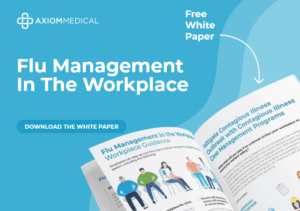Safety is always a hot topic, but it’s of particular concern during the summer season. Extreme heat places immense stress on workers’ bodies. And if it’s coupled with humidity? Things could go downhill quick.

In 2024, The Workers’ Compensation Research Institute found that after 90°F the probability of work-related accidents increases by up to 6% and that injuries become more severe. Does that mean hard work has to stop during the height of summer? It does not, but it does mean that we must stop relying solely on the old ways of dealing with heat.
In today’s climate, traditional safety measures such as hydration schedules and shaded rest breaks are not always enough. Incorporating technology into safety practices adds extra layers of protection.
Game-Changing Technologies for Heat Safety
- Wearable Devices for Real-Time Health Monitoring
One of the most promising innovations is wearable technology that tracks workers’ vital signs and environmental conditions.
- How it works: Wearable devices, such as smartwatches or biometric bands, monitor metrics like heart rate, body temperature, and sweat output. Some devices even measure environmental conditions like heat and humidity.
- Applications: When a worker shows signs of heat stress (e.g., elevated heart rate or abnormal body temperature), the device can send an alert to both the worker and their supervisor. This allows for immediate intervention.
- Example: Epicore Biosystems offers sweat-sensing wearables that measure hydration levels and electrolyte loss. This data helps supervisors understand when workers are nearing the limits of physical exertion in extreme heat.
- Environmental Sensors for Heat Index Monitoring
Environmental sensors placed on job sites are a powerful tool in heat safety management.
- How it works: These sensors measure real-time temperature, humidity, and radiant heat to calculate the heat index. Unlike traditional thermometers, they account for actual working conditions at specific locations.
- Applications: Alerts can be sent to supervisors or workers when the heat index surpasses safe thresholds. Employers can use the data to schedule work-rest cycles or adjust workloads to mitigate heat exposure.
- Example: OSHA’s Heat Safety Tool App integrates this concept by helping workers and employers plan around current heat index data. Advanced systems, like WBGT monitors, offer even more detailed risk assessments.
- Cooling Tech in PPE (Personal Protective Equipment)
Advancements in high-tech cooling gear offer innovative ways to keep workers physically cooler during their shifts.
- Cooling vests and uniforms: These are designed with cooling technologies like evaporative materials or built-in ice pack pockets to regulate body temperature.
- Wearable fans: Lightweight fans can be attached to helmets or vests to improve airflow around workers.
- Heat-reflective clothing: Some uniforms now feature fabrics that reflect solar radiation, reducing heat absorption while staying breathable.
These tools can mean the difference between manageable heat and dangerous overheating, especially in jobs requiring heavy protective equipment.
- Predictive Analytics for Heat Risk Management
Predictive technologies enable employers to see heat risks coming before they happen.
- How it works: By analyzing weather forecasts, historical data, and workload schedules, predictive analytics software identifies periods when heat-related risks will be highest.
- Applications: Employers can use this data to plan shift schedules, increase rest periods, or provide extra cooling resources on days with extreme heat advisories.
- Example: IBM’s Weather Company offers predictive analytics tools that help industries like construction and agriculture mitigate risks by anticipating weather-related hazards.
- Automated Hydration Reminders
Dehydration is one of the fastest ways extreme heat puts workers at risk. Tech-driven hydration solutions can help ensure workers consistently stay hydrated.
- How it works: Apps and wearables equipped with hydration tracking send workers automated reminders to drink water at specific intervals. Some use data from sweat sensors to personalize recommendations based on individual hydration needs.
- Applications: Workers in remote or high-intensity environments can rely on tech to maintain hydration without needing a supervisor to intervene.
- Example: Smart water bottle systems link with mobile apps to remind users to hydrate throughout the day.
- Axiom Medical’s Webinars
Gaining knowledge is an important preventative measure, and webinars are a great way to hear directly from the experts.
- How it works: Watch the video linked below!
- Applications: We’ll gain important insights into what to do when the heat takes a toll — before it becomes a crisis.
- Example: Heat Stress Prevention: Keeping Your Cool as Temperatures Rise is hosted by Axiom’s Chief Medical Officer, Dr. Scott Cherry, and Chief Revenue Officer of Epicore Biosystems, James Ryan.










